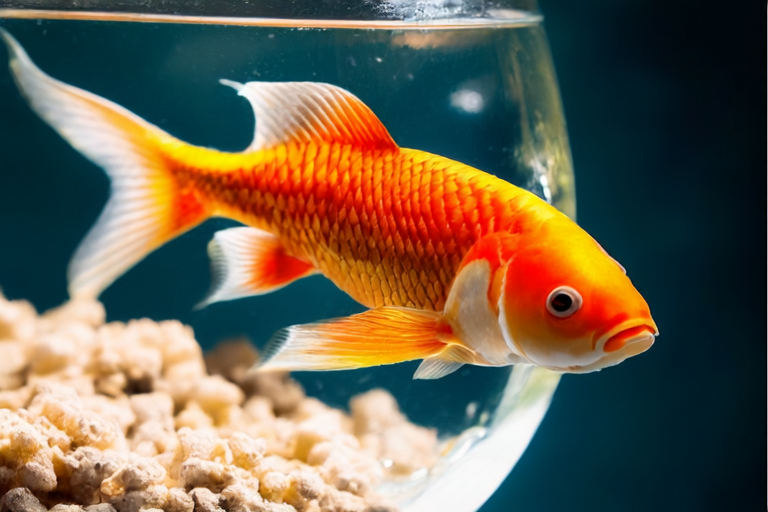The Ultimate Guide to Goldfish Care: Tips for Happy and Healthy Pets
Goldfish are one of the most popular pets in the world, known for their vibrant colors and graceful movements. However, keeping them healthy and happy requires more than just a tank and some food. This guide provides comprehensive advice on goldfish care, covering everything from water quality and temperature to diet and habitat setup.
Basic Needs of Goldfish
Water Quality and Temperature
One of the most critical aspects of goldfish care is maintaining clean and properly filtered water. Goldfish produce a significant amount of waste, which can quickly degrade water quality if not managed correctly. Therefore, it’s essential to have an efficient filtration system that removes both physical debris and harmful chemicals like ammonia and nitrite. Additionally, regular water changes—about 20% weekly—are necessary to keep the environment pristine.
The ideal temperature range for goldfish is between 68°F and 74°F (20°C to 23°C). Maintaining this temperature helps prevent stress and disease. In colder climates, consider using a heater during winter months or placing the tank away from drafts and direct sunlight.
Filter Systems
A good filter should provide mechanical, biological, and chemical filtration. Mechanical filtration traps large particles, while biological filtration supports beneficial bacteria that break down harmful substances. Chemical filtration can be achieved through activated carbon, which absorbs odors and impurities.
When choosing a filter, ensure its flow rate matches your tank size. For example, a filter with a turnover rate of four times the volume of the tank per hour works well for most setups.
Dietary Needs
Goldfish require a balanced diet rich in proteins, fats, vitamins, and minerals. A variety of foods can achieve this, including high-quality flake or pellet foods designed specifically for goldfish. These commercial feeds offer complete nutrition but should not be the sole source of food.
In addition to dry foods, incorporate live or frozen options such as brine shrimp, bloodworms, and daphnia into their meals once or twice a week. These additions provide additional nutrients and mimic natural feeding behaviors.
Feed your goldfish only what they can consume within two minutes. Overfeeding leads to poor water quality and health issues. It’s also important to avoid foods containing excessive amounts of color enhancers or artificial preservatives.
Setting Up the Ideal Environment
Tank Size and Decorations
Goldfish grow rapidly and need ample space to thrive. As a general rule, each adult goldfish requires at least 20 gallons (75 liters) of water. Smaller tanks may seem sufficient initially but become overcrowded as fish mature.
Decorate the tank thoughtfully to create hiding spots and reduce stress. Plants, rocks, and driftwood serve multiple purposes—they enhance aesthetics, promote natural behavior, and provide shelter. Ensure any decorations are safe and free from sharp edges.
Lighting and Maintenance
Proper lighting enhances the appearance of your goldfish and encourages algae growth, which can act as supplementary food sources. Use full-spectrum LED lights that mimic natural daylight cycles, providing 8-10 hours of light daily.
Maintain consistent maintenance routines to keep the tank looking great and functioning optimally. Regularly clean filters, vacuum substrate, and check equipment for signs of wear or malfunction.
Common Health Issues and Prevention Measures
Parasitic Infections
External parasites like ich (Ichthyophthirius multifiliis) cause white spots on fish bodies and fins. Symptoms include rapid breathing and rubbing against surfaces. Treatment involves raising the water temperature slightly above normal levels and adding medication specifically targeting parasitic infections.
To prevent these issues, maintain excellent water quality, quarantine new arrivals before introducing them to the main tank, and avoid overstocking.
Bacterial Diseases
Bacterial diseases often manifest as ulcers, fin rot, or cloudiness in eyes. Antibiotics administered via food or directly into the water can treat these conditions effectively.
Prevent bacterial infections by keeping stress low through proper care practices, avoiding sudden changes in water parameters, and ensuring adequate oxygenation.
Interacting with Your Goldfish
While goldfish aren’t interactive in the same way as other pets, they do respond positively to gentle handling and attention. Some enthusiasts train their fish to recognize feeding times and even perform simple tricks.
Handle goldfish carefully when necessary, using a soft net rather than bare hands. Gently scoop them up and support their body fully to minimize stress.
Conclusion
By following these guidelines, you’ll create a thriving home for your goldfish where they can enjoy long, healthy lives. Remember, patience and dedication are key components of successful pet ownership. With proper care, your goldfish will bring joy and beauty to your home for many years to come.
